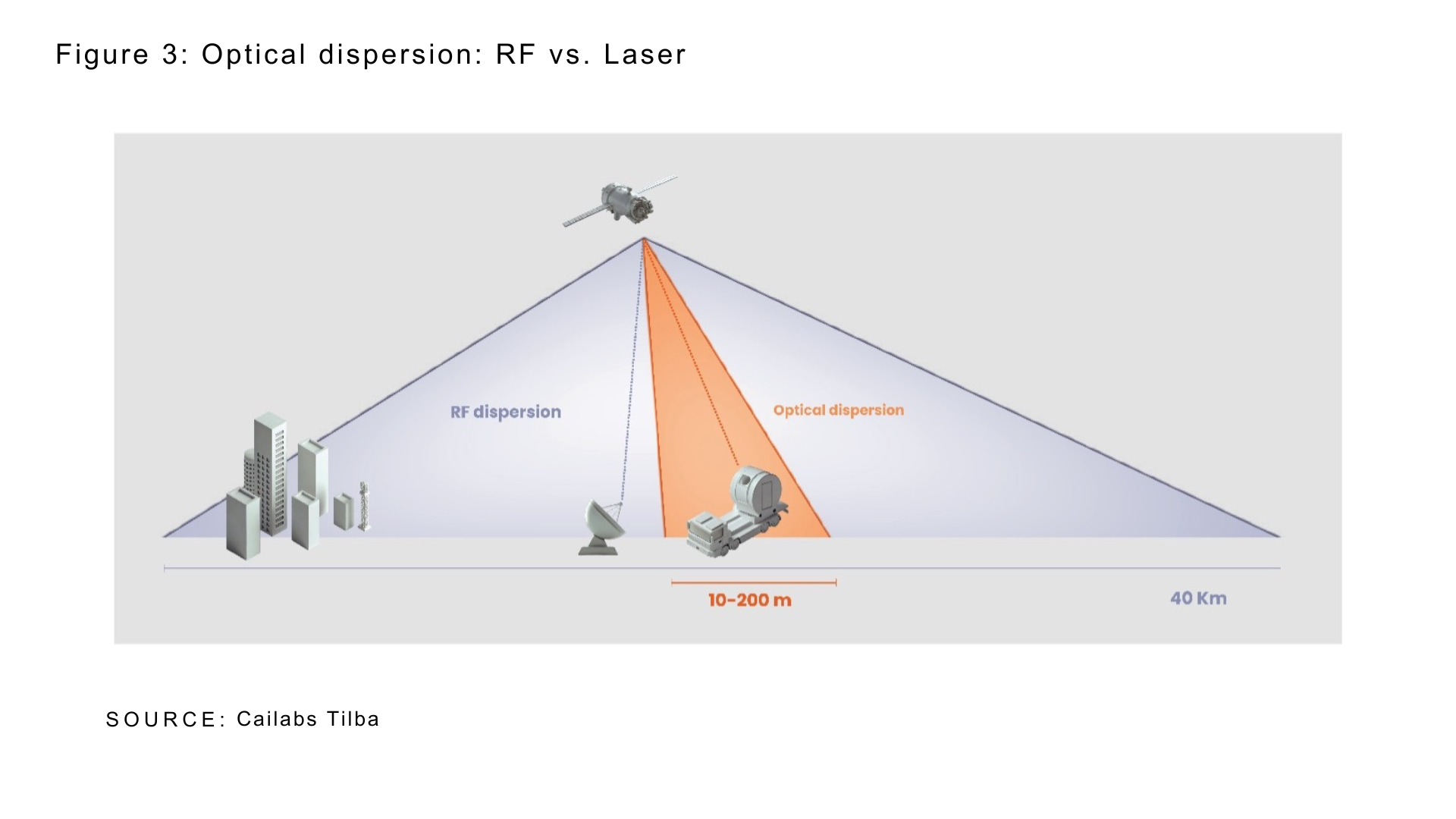Laser Communications Footprint vs. Traditional RF
Laser communications reduce the signal footprint from kilometers to just 10–200 meters. Compared to traditional RF systems’ wide-area dispersion, this extremely narrow beam makes links nearly impossible to jam, intercept, or geolocate — giving a decisive edge in contested environments.

The 10-Meter Kill Zone: Laser Communications as Defence Infrastructure
Electronic warfare is often called “the first shot fired.” From Ukraine’s frontlines to deterrence operations in the Pacific, the ability to communicate securely, rapidly, and without detection has become a strategic necessity.
Traditional radio communications are easy to jam, intercept, or target. Laser communications change the game. With a beam footprint as small as 10 meters, they’re nearly impossible to jam or detect — even in highly contested environments.
This episode of Tech Command Investing explores how laser communications are moving from niche experiments to mission-critical infrastructure for defence, space, and civilian connectivity.
Breaking Through the Turbulence: The Future of Space-Enabled Connectivity
Laser communications aren’t just a step forward. They represent a whole new frontier for defence, connectivity, and global infrastructure. With data demands skyrocketing and RF networks approaching their limits, optical satellite links are fast emerging as the backbone of tomorrow’s secure, high-throughput systems.
In this episode, I sit down with Jean-François Morizur, Founder & CEO of Cailabs, to explore the rise of dual-use laser communications and their strategic potential. From battlefield coordination to autonomous operations, we uncover how this French deep-tech startup is carving out a critical role in one of the most advanced corners of space and defence technology.
Jean-François unpacks the breakthrough that’s helping Cailabs overcome atmospheric turbulence, one of the last great technical hurdles to scaling laser communications, and explains why this could unlock real-time, unjammable connectivity between orbit and Earth.
We also dive into the investor landscape, the battle for spectrum dominance, and how AI is fuelling unprecedented demand for high-bandwidth, low-latency links from space to edge. With €46 million raised and defence agencies already taking notice, this conversation charts where laser communications are heading and why they might soon be as essential as GPS.
Key Takeaways:
- Near-impossible to jam or intercept compared to traditional radio.
- Orders-of-magnitude higher bandwidth, powering AI, ISR, and finance.
- Bypassing spectrum battles, offering frictionless, secure global connectivity.
- Strategic dual-use impact, spanning defence, telecoms, disaster relief, and sovereignty.
From ISR to finance, disaster relief to telecoms, laser communications could redefine how power, data, and security are projected on a global scale. As militaries and industries rethink contested connectivity, laser communications are shifting from a “nice-to-have” to the infrastructure of space-enabled security and sovereignty.
Additional resources from this episode:
- The Economist – DARPA, lasers and an internet in orbit
- Reddit – Ongoing discussion on r/lasercom

🎧 Listen now:
[Amazon Music] | [Spotify] | [Apple Podcasts] | [YouTube] | [Audible]


